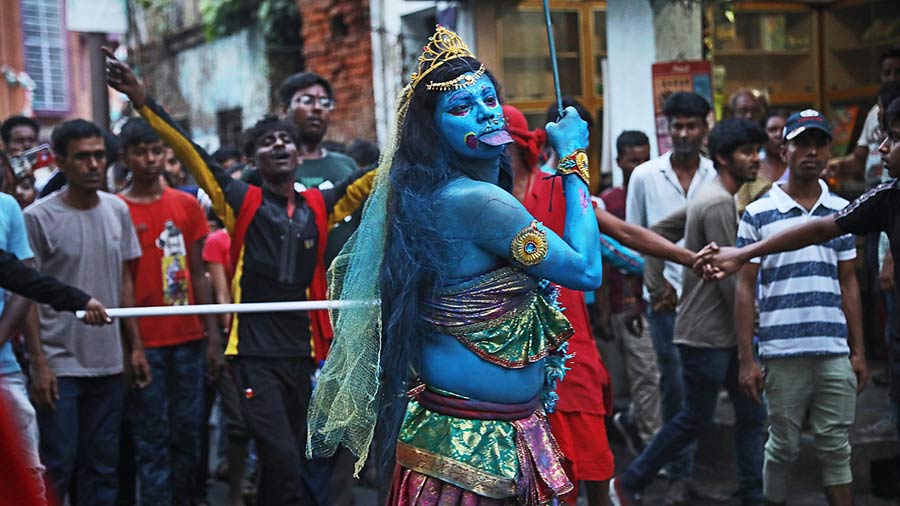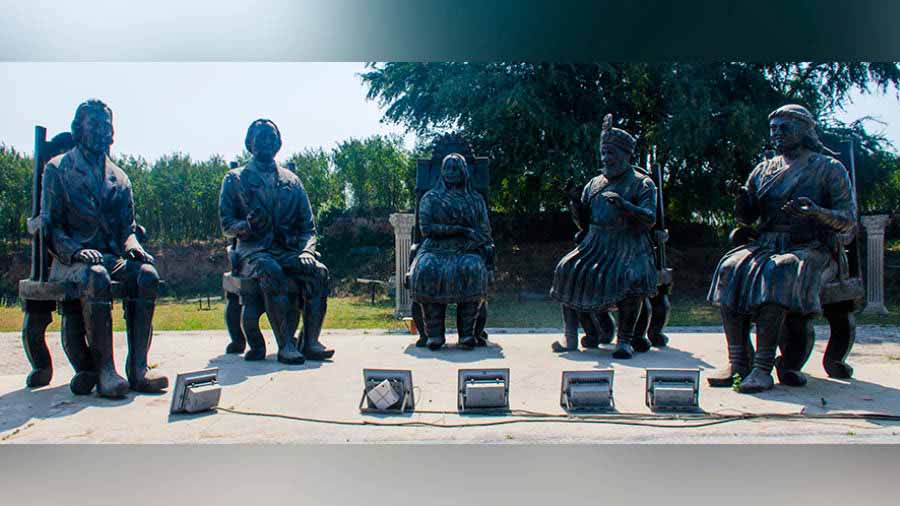Charak or Gajan is a festival celebrated in West Bengal and more widely in Bangladesh. It is known for its ‘non-elite’ nature and is celebrated mostly by non-Brahmin communities. While it is celebrated on a low scale in the city of Kolkata, rural Bengal sees a variety of rituals celebrated during this festival.
Fertilising is a major theme of Gajan, thus it is either linked with the worship of Dharmathakur or Dharmaraj, a rural deity generally worshipped by agricultural and non-Brahmin communities or Shiva, which is worshipped by many farming communities too. The main festival takes place on the last day of Chaitra in Bengali Calender (usually April 14) during day time, which is widely popular because of the rituals of devotees hanging from the 'Charak Tree' and body piercing activities by them. The devotees are popularly known as 'Gajan Sanyasis'. Gomira festival in Uttar Dinajpur area is quite similar to Gajan.
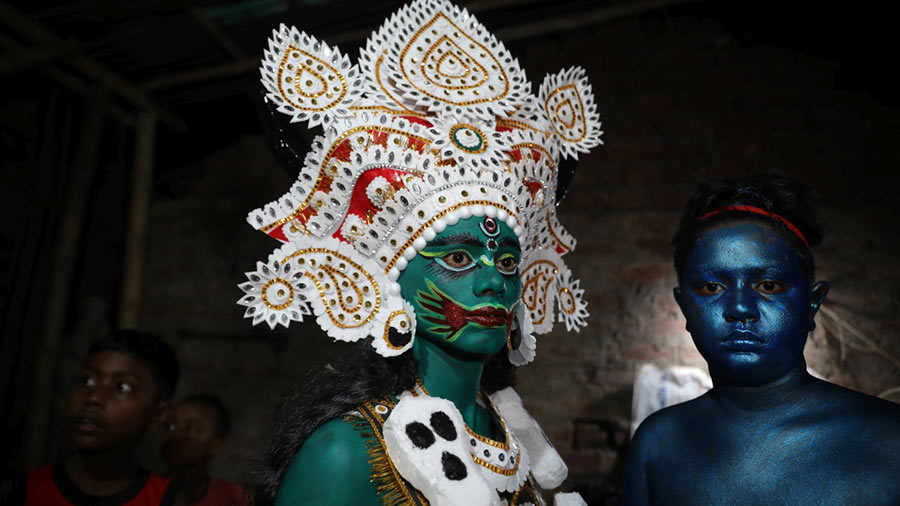
A devotee dressed as a Hajra with fresh paint on his face
An important ritual happens on the day before the last day of Chaitra. This involves celebration surrounding Shiva’s marriage to his muse. Shiva is referred as Neel Devata (The Blue one) here. Regarding the name of his muse, there are several options — the most popular being that of “Nilavati” which is supported by Ralph. W. Nicholas in his book Rites of Spring: Gajan in Village Bengal (2008) — the latest research work done on the topic.
The celebration around this marriage, which takes place late on the night of April 13 involves “Hajra Puja”, which takes place in grand style in several pockets of Murshidabad district and other areas of North Bengal. Hajra Puja celebrations take place in several parts of Behrampur and Cossimbazar, which attracts several devotees and in recent times, many urban photographers have taken an interest to document them.
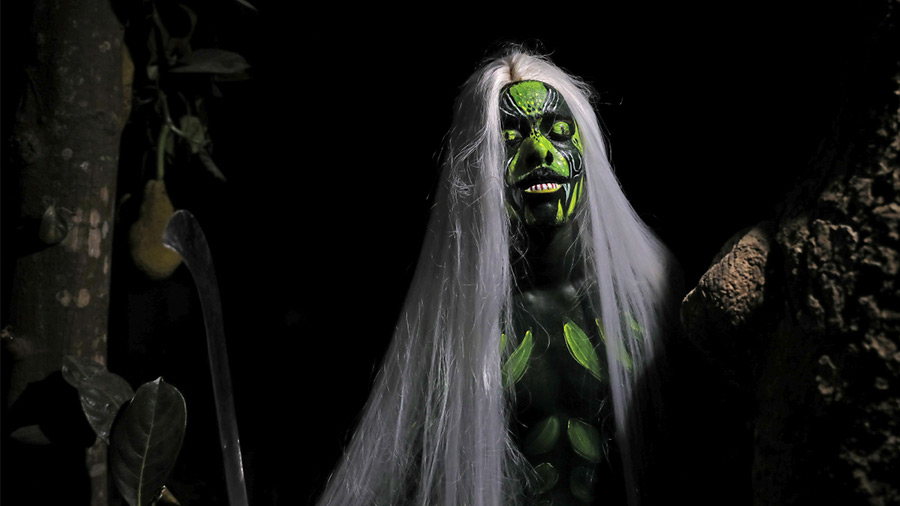
A devotee dressed as a demon during Hajra Puja. The origin of the term 'Hajra' is not clear
Hajra Puja, also known as “Baro Devatar Puja” or “Dano Barona Puja”, involves worshipping 12 deities that are supposed to be accompanying the bride and groom during the marriage of Shiva as Neel Devata with his muse, Nilavati. A mask of Ardhanarishwar is fixed on the Charak Tree, which is a leafless trunk of a tree without branches. Here, Ardhanarishwar symbolises a composite form of Shiva and Nilavati.
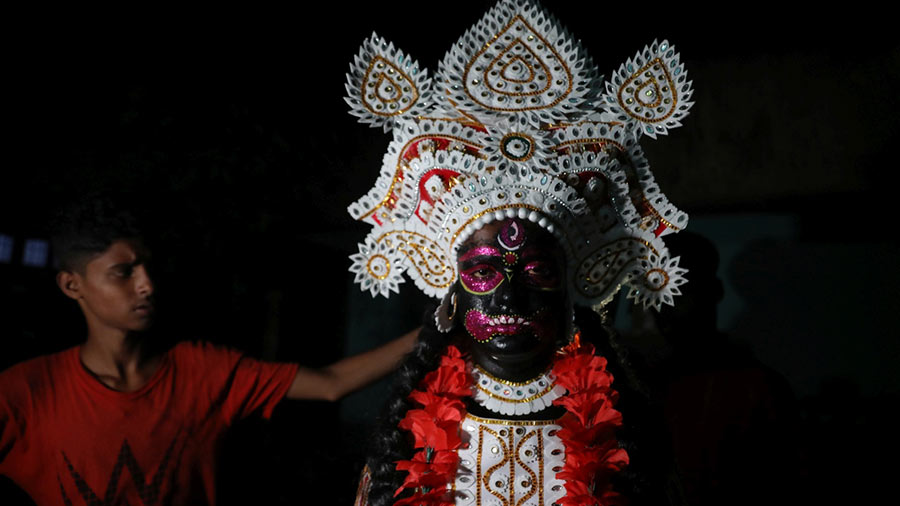
A bystander appreciates the look of a devotee, dressed as a Hajra
There are many versions of the name of these invited deities. Researcher Girijashankar Roy in his 1975 published research paper Uttorbonge rajbanshi somajer debdebi o puja parbon (Chapter 6) mentions names of these invited deities as 1) Shiva (in his usual form) 2) Gouri 3) Sanji 4) Dakini 5) Jokini 6) Mashan 7) Bhoot 8) Tistaburi 9) Bishahari 10) Kuchuni 11) Apadevata 12) Kali.
Unlike on Shivaratri, where it is strictly a vegetarian affair, here the offerings are various kinds of smoked fishes, including Shol fish. In some places, a goat or a pigeon is also sacrificed.
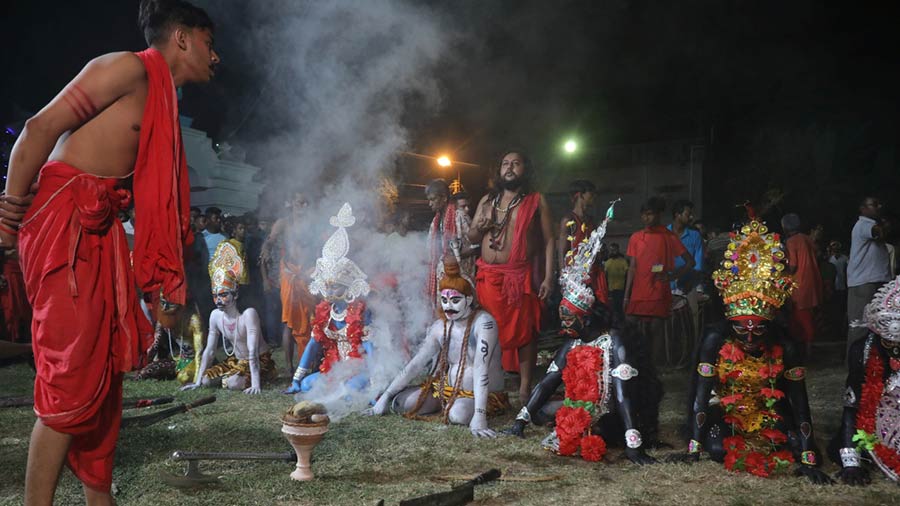
Devotees dressed as Hajras sitting in front of Charak Tree with a priest in the foreground
In the Berhampore area, the Charak festival takes place in its usual style in an open field close to a temple. The tree trunk is kept lying in the front of the temple and is fixed upright on April 14 afternoon. As a part of Hajra festival, the devotees dress up as different deities. Their face is painted with bright colours and they wear exquisite clothes and ornaments. There are workshops where such makeup is done just before the “Hajra Puja” starts. Each performer carries a sharp weapon. They are known as “Hajras” and they come in groups. Nowadays, devotees do not strictly follow the defined characters while playing their role. Some dress up as Brahma or Indra too and in relatively urban areas one can see people getting into irrelevant makeup like that of Spiderman, which spoils the entire charm.
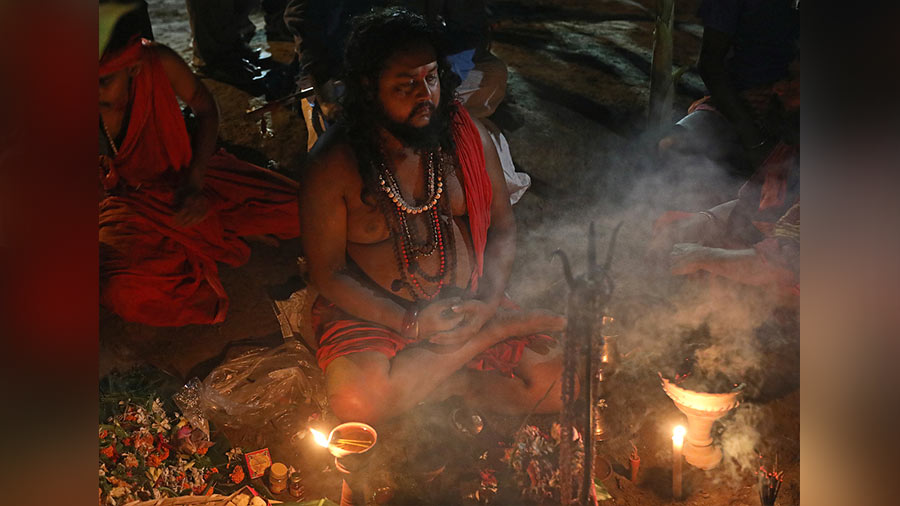
A priest worships on the banks of a river as a part of Hajra Puja. Smoked fish is offered to the deity
The origin of the term “Hajra” is not clear. In the book Banglar Lokadevata o Lokachar, Kamini Kumar Roy mentions (Page 187) that the term “Aajra” means ghost and demons. The term was also used earlier in the Mymensingh division, in Bangladesh, which probably later got converted into Hajra. Shiva’s disciples being such creatures, the name seems apt.
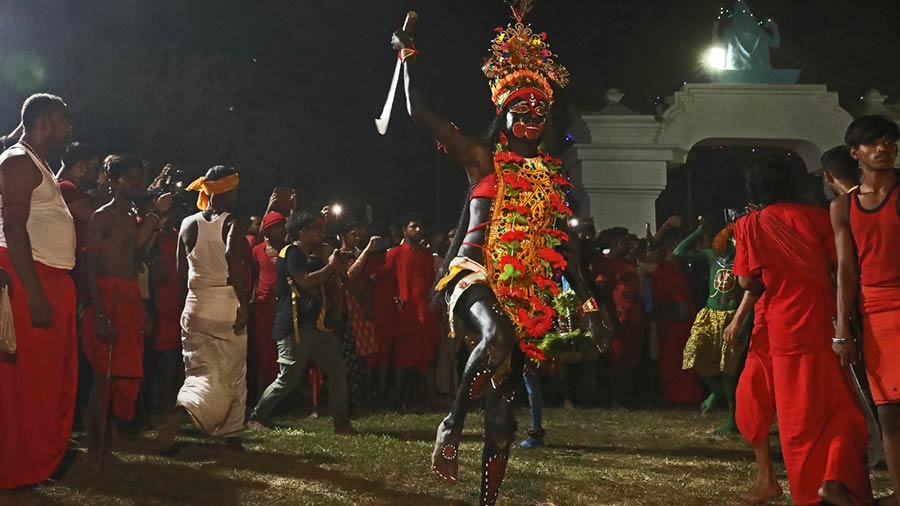
A devotee dressed as Kali, one of the Hajras, brandishing his weapon while circulating the Charak Tree
Dressing up is a time-taking process. After all is over, it’s a treat to watch them in action. The devotees dressed as deities sit encircling the Charak tree and their weapons in their front on the ground. The priests read out the mantra and after the initial rituals are complete, the devotees dressed as deities break into a wild frenzied dance brandishing their weapons encircling the Charak Tree.
After this everyone heads towards the crematorium usually located beside a river. In Cossimbazar, everyone heads towards Khagra Shamsan Ghat. The Hajra Puja is done here with one of the major ingredients being five human skulls. The skulls are smeared with mustard oil and vermillion after being washed with holy Ganges water. With the passing of time in many places the skulls have been replaced by bel (Wood Apples).
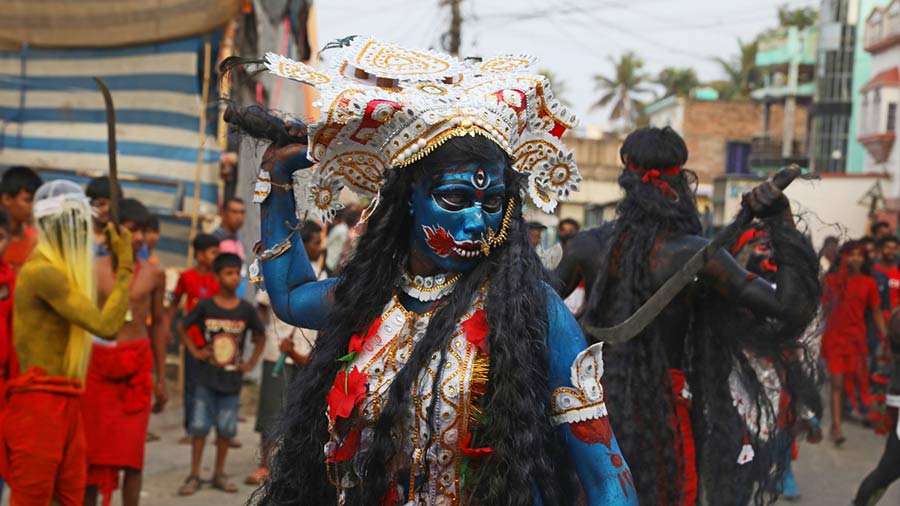
After the end of Hajra Pujo, devotees return to the temple
After this event, the devotees dressed as deities show some physical acrobatics with their weapons, usually known as “Shamsan Khela” or burial ground dance. The skulls or the wood apples are burnt. The performers’ return back to the temple dancing with people surrounding them, so that bystanders are not hurt as they brandish their weapons around.
The event continues till early morning hours as residents crowd in numbers to witness these traditional rituals.
